TUNE-UP - 6-CYL
1988 Jeep Cherokee
1987-88 TUNE-UP
Jeep 6 Cylinder Tune-Up
Cherokee, Comanche, Wagoneer, Wrangler
IDENTIFICATION
ENGINE IDENTIFICATION
Engine can be identified by the fourth character of engine Build Date Code number, located on a tag attached to right side of block between No. 2 and 3 cylinders.
The same code letter is also the fourth character in the Vehicle Identification Number (VIN), located at top left corner of dashboard.
ENGINE CODE TABLE
 Engine Code
Engine Code
4.0L (242") MPFI M
4.2L (258") 2-Bbl C
TUNE-UP NOTES
NOTE: When performing tune-up procedures described in this
article, these notes and precautions must be followed.
Due to late changes and corrections, always refer to Emission Control Label in engine compartment before attempting tune-up. If manual and label specifications differ, use label specifications.
When performing tune-up on vehicles equipped with a catalytic converter, do not allow or create an engine misfire in one or more cylinders for an extended period of time. Damage to converter from overheating may occur due to loading with unburned fuel.
TESTING
ENGINE COMPRESSION
Check compression pressure with engine at normal operating temperature, all spark plugs removed, throttle and choke valves wide open and engine at cranking speed.
COMPRESSION SPECIFICATIONS TABLE
 Application Specification
Application Specification
Compression Ratio 9.2:1
Compression Pressure 120-150 psi (8.4-10.5 kg/cm)
Maximum Variation Between Cylinders .. 30 psi (2.1 kg/cm)
 HIGH
TENSION WIRE RESISTANCE
HIGH
TENSION WIRE RESISTANCE
Do not puncture spark plug wires with any type of probe. Remove spark plug wire and check resistance using an ohmmeter.
SPARK PLUGS
SPARK PLUG TYPE TABLE
 Application Champion
No.
Application Champion
No.
All Models RFN14LY
SPARK PLUG SPECIFICATIONS TABLE
 Gap:
In. (mm) Torque: Ft. Lbs. (N.m)
Gap:
In. (mm) Torque: Ft. Lbs. (N.m)
0.035 (0.89) 7-15 (10-20)
FUEL PUMP
4.0L
Remove
the cap from the pressure test port located in the
fuel rail. See
Fig. 1. Connect Fuel Pressure Gauge
(J-34730-1) to the
pressure fitting.
Start
vehicle. Pressure should be approximately 31 psi
(2.
1 kg/cm) with
the vacuum hose connected to the pressure regulator and
39
psi (2.6 kg/cm) with
the vacuum hose removed from the pressure
regulator.
See FUEL PUMP SPECIFICATIONS TABLE.
Check the
fuel pump flow rate. A good fuel pump will
deliver at least one
liter of fuel per minute with the fuel return
line pinched off.
If the fuel pump does not pump adequately, inspect
the fuel
system for a plugged fuel filter or filter sock.
Fuel pump
flow rate can be checked by connecting one end
of an old A/C
gauge hose to the fuel test port on the fuel rail and
inserting
the other end of the hose into a container of at least one
liter
or more capacity.
Run the fuel pump by installing a jumper wire into
diagnostic connector terminals D1-5 and D1-6. Be sure to pinch off the fuel return line or most of the fuel will be returned to the fuel tank.

 Fig.
1: Fuel System Pressure Test Components
Courtesy of American Motors/Jeep Corp.
Fig.
1: Fuel System Pressure Test Components
Courtesy of American Motors/Jeep Corp.
4.2L
Perform fuel pump test with air cleaner removed and fuel
inlet line or filter disconnected at carburetor. Disconnect fuel return line at fuel filter and plug nipple on filter. Make all tests at idle speed. See FUEL PUMP SPECIFICATIONS TABLE.
FUEL PUMP SPECIFICATIONS TABLE
Application Pressure Volume
** psi (kg/cm2) (1) Pts. (L)
4.0L (2) 31 (2.1) 1.0 (.47)
4.0L (3) 39 (2.6) 1.0 (.47)
4.2L 4.0-5.0 (.28-.35) 1.0 (.47)
- Volume per 30 seconds.
- With the vacuum hose connected to the pressure regulator.
- With the vacuum hose removed from the pressure regulator.
ADJUSTMENTS
VALVE ARRANGEMENT
* E-I-I-E-I-E-E-I-E-I-I-E (Front-to-rear).
VALVE CLEARANCE
All engines are equipped with hydraulic lifters. Valve clearance is not adjustable.
IGNITION COIL WIRE
Remove ignition coil wire from coil and distributor cap. Check terminals for corrosion and clean (if necessary). Check coil wire resistance. Replace wire if resistance is excessive.
HIGH TENSION WIRE RESISTANCE (OHMS) TABLE
Wire Length Minimum Maximum
0-15" 3000 10,000
15-25" 4000 15,000
25-35" 6000 20,000
Over 35" 8000 25,000
DISTRIBUTOR
4.0L
Information not available from manufacturer.
4.2L
All models are equipped with Motorcraft Solid State Ignition (SSI) systems. No adjustments are required.
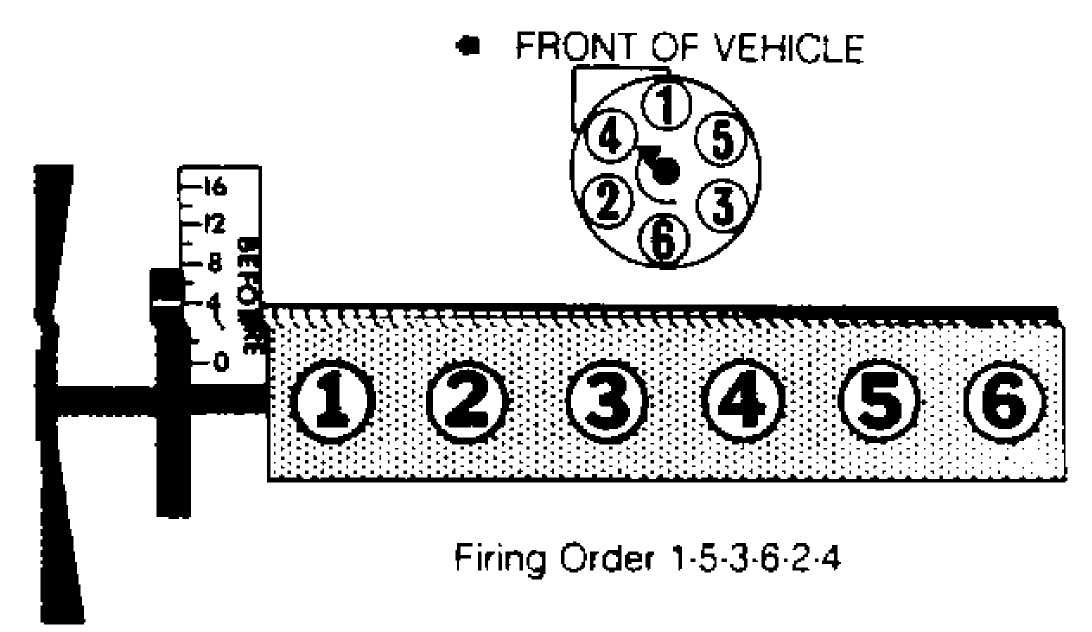
Fig. 2: 4.0L & 4.2L Timing Marks & Firing Order Magnetic probe located at 9.5 degrees ATDC on 4.2L.
IGNITION TIMING (4.0L)
Information not available from manufacturer. IGNITION TIMING (4.2L)
NOTE: Engines are equipped with a receptacle for a magnetic probe timing light, located 9.5 degrees ATDC. Do not use this location to check timing with a conventional light, use a magnetic probe timing light.
Standard Timing Procedure
1) Apply
parking brake, and place transmission in Neutral
(Park
for automatic transmissions). Operate
engine to normal operating
temperature. Turn ignition off. Install timing light.
Connect
tachometer. Disconnect and plug vacuum hose at
distributor.
Disconnect vacuum switch assembly wire connector, located
on
top of valve cover. Start engine and increase engine speed to
1600
RPM.
Compare timing to specification. See
IGNITION TIMING SPECIFICATIONS table. To adjust timing, loosen distributor clamp bolt and turn distributor. Recheck timing after clamp bolt is tightened.
Alternate Timing Procedure
Apply
parking brake and place transmission in Neutral
(Drive
for automatic transmissions). Operate
engine to obtain normal
operating
temperature. Turn ignition off. Install timing light.
Disconnect and plug vacuum switch hose (Red and Black
wires connected to switch). Disconnect distributor vacuum advance hose and connect hose to vacuum switch. Disconnect wire connector from knock sensor, located in cylinder head.
3) Using a jumper wire, ground knock sensor wire connector to engine block. Start engine. With engine at idle speed (solenoid energized), check timing. Adjust timing to one degree more than specification (if required). See Emission Control Label.
IGNITION TIMING
SPECIFICATIONS (DEGREES BTDC@RPM) - 4.2L
Application Man.
Trans. Auto.
Trans.
50 State 9 @ 1600 9 @ 1600
High Altitude 16 @ 1600 16 @ 1600
HOT (SLOW) IDLE RPM
4.0L
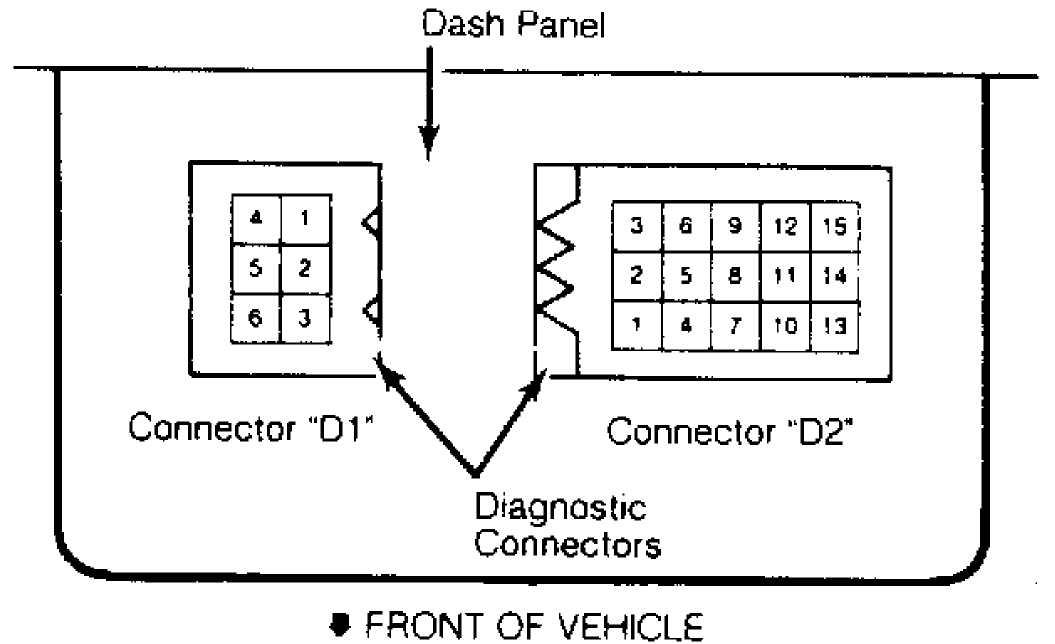
Fig. 3: Diagnostic Connector Terminal Identification Courtesy of Chrysler Motors.
Apply
parking brake and place transmission in Neutral
(Drive for
automatic transmissions). Operate engine
to normal
operating temperature. Turn ignition off.
Ensure
all accessories are off. Connect positive
tachometer
lead to terminal "D1-1" and negative lead to "D2-7"
of
diagnostic connectors. See Fig. 3.
Disconnect air stepper motor
connector
and TPS wiring connector. See Fig. 4.
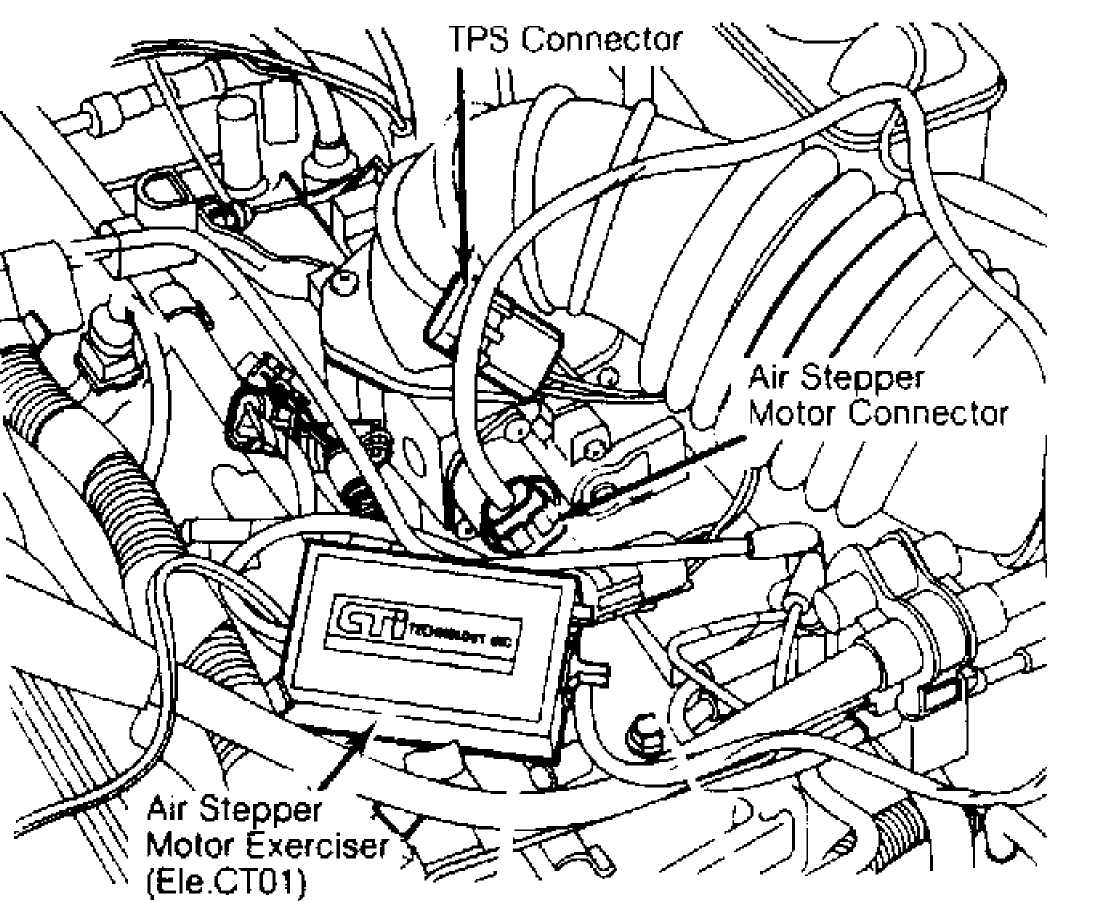
Fig. 4: Installing Air Stepper Motor Exerciser Courtesy of Chrysler Motors.
Install
Air Stepper Motor Exerciser (Ele.CT01) on the air
stepper
motor connector. See Fig. 4. Install the
Red terminal of the
air stepper exerciser on the positive battery
post and the Black
terminal on the
negative battery terminal.
Start
engine and place stepper motor exerciser switch on
the "LOW"
position and note engine RPM. Idle speed should be 750F50
RPM.
Disconnect and remove air stepper motor exerciser.
If
adjustment is required, turn ignition off. Remove the
welch
plug from the RPM adjusting screw cavity. See Fig. 5. Turn
RPM
adjusting screw inward 2
turns. Start the engine and note engine RPM.
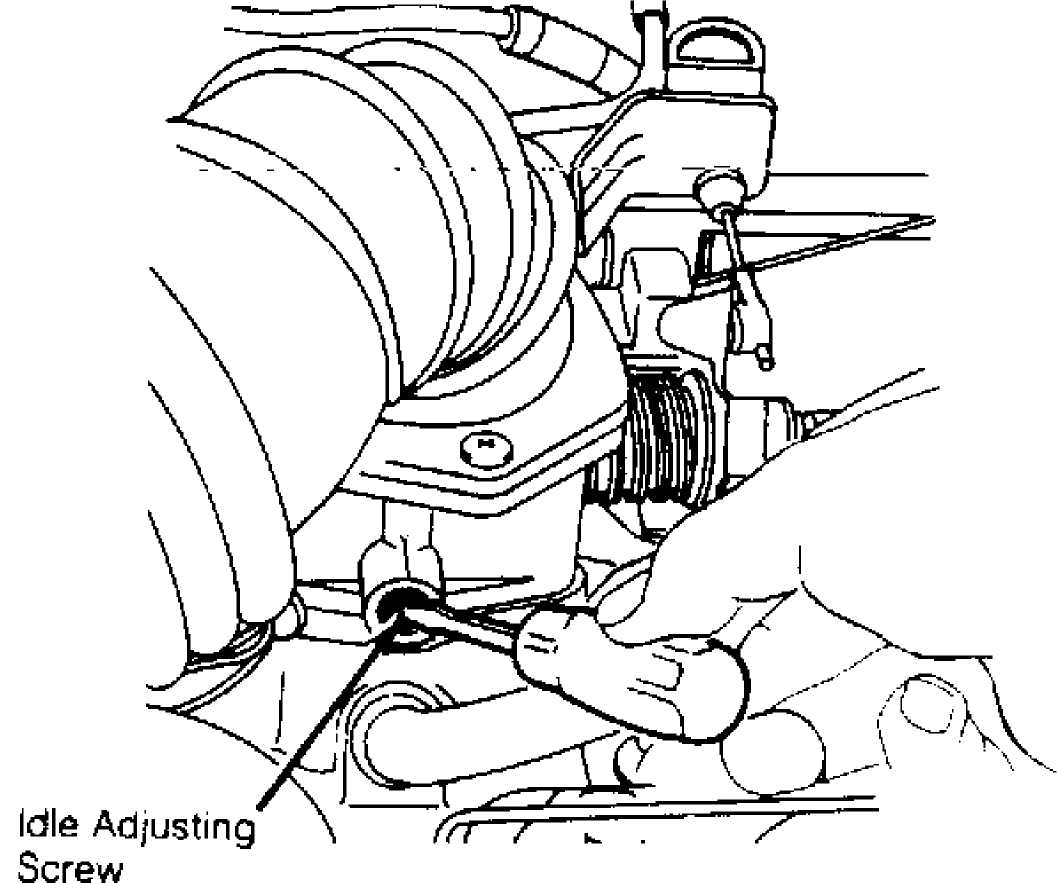
Fig. 5: Adjusting Idle RPM Courtesy of Chrysler Motors.
6) Adjust idle RPM screw to obtain idle speed of 750F50 RPM. Once correct idle RPM is obtained, seal the welch plug cavity with RTV sealant. Reconnect air stepper motor and TPS.
4.2L
Warm
engine to normal operating temperature. Apply parking
brake.
Place automatic transmission in Drive (Neutral on
manual
transmission). Disconnect and
plug vacuum hose from vacuum actuator.
Disconnect
solenoid wire connector.
Adjust
curb idle screw to obtain correct curb idle. See
CURB
IDLE SPEED (RPM) table. Apply 10-15 in. Hg
vacuum to vacuum
actuator. With
throttle positioner fully extended, adjust screw on
throttle
lever, to set vacuum actuator RPM to specification. See
VACUUM
ACTUATOR & SOLENOID IDLE (RPM) table.
Disconnect vacuum pump.
Apply
battery voltage to solenoid with a jumper wire. Turn
A/C
on (if equipped). Open throttle, allowing
solenoid to fully
extend. Adjust
solenoid adjusting screw to obtain solenoid idle RPM.
See VACUUM ACTUATOR & SOLENOID IDLE (RPM) table. Reconnect solenoid connector and vacuum hose.
CURB IDLE SPEED (RPM) TABLE - 4.2L
Application Man. Trans. Auto. Trans.
50 State 680 600
High Altitude 700 650
VACUUM ACTUATOR &
SOLENOID IDLE (RPM) TABLE -
4.2L
Application Vacuum
Actuator Solenoid Energized
Man. Trans 1100 900
Auto. Trans 900 800
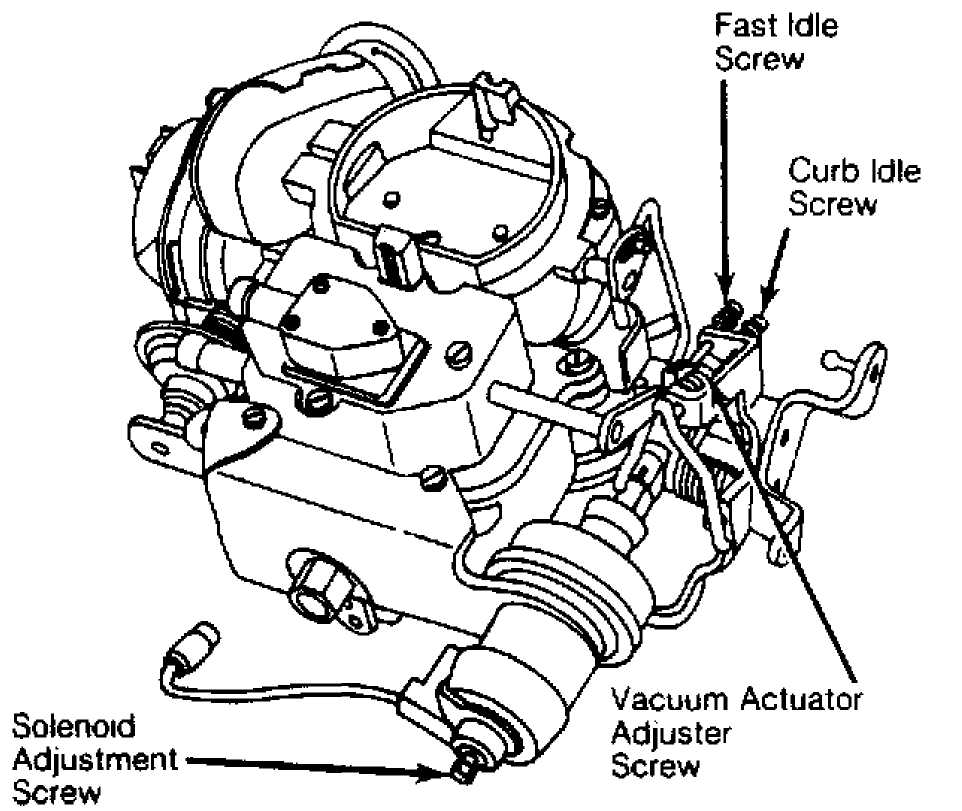
Fig. 6: Adjusting 4.2L Idle RPM Courtesy of Chrysler Motors.
NOTE: Idle mixture adjustment is not part of a normal tune-up. DO NOT adjust mixture unless carburetor has been disassembled
or vehicle fails emissions testing. IDLE MIXTURE (TACHOMETER (LEAN DROP) PROCEDURE)
NOTE: On 4.2L engines, ensure idle speed and timing are set prior to adjusting the idle mixture. If mixture adjustment time exceeds 3 minutes, run engine at 2000 RPM in Neutral for one minute, and resume adjustment. On 4.0L engines, idle mixture adjustment is not possible.
4.2L
Remove
carburetor and locate roll pins blocking idle
mixture screws.
Drill through throttle body on closed end of roll pin
hole. Drive
pins out with punch. Reinstall carburetor. Install
tachometer.
Operate
engine to normal operating temperature, and adjust
curb
idle speed. Place automatic transmission selector in Drive
(Neutral
for manual transmissions). Turn mixture
screws inward until
RPM drops. Turn screws outward until highest RPM is reached.
3) Turn
mixture screws inward to obtain the correct decrease
in
RPM. See LEAN DROP (RPM) table. Adjust both screws equally.
When
mixture is correctly adjusted, replace roll pin to block
adjustment
screws.
NOTE: If final RPM differs more than 30 RPM from specified curb
idle speed, reset curb idle, and repeat mixture adjustment.
LEAN DROP (RPM) TABLE
Application Man. Trans. Auto. Trans.
4.2L 50 50
THROTTLE POSITION SENSOR (TPS)
NOTE: Adjustment of TPS only applies to the 4.0L models. It may be necessary to remove throttle body from intake manifold, to access sensor wiring harness.
Checking & Adjusting - 4.0L (Automatic Transmission)
Locate the
square TPS connector. Note connector terminal
identification
stamped on the back of the connector. Turn ignition on.
Connect
voltmeter through back of wiring harness
connector. Connect
negative voltmeter lead to terminal "D" and
positive
voltmeter lead to terminal "A" to check input voltage. DO
NOT
disconnect TPS connector.
Hold
throttle plate closed against idle stop and note
voltage. Input
voltage should be approximately 5 volts.
Disconnect
voltmeter positive lead and
connect to terminal "B" to measure output
voltage.
With
throttle plate closed, measure the output voltage.
The
output voltage should be approximately 4.2 volts.
If output
voltage is not within specification, loosen TPS
retaining screws.
Partially
tighten one retaining screw. Rotate TPS to
obtain correct output
voltage. Tighten retaining screws once correct
voltage is
obtained.
Checking & Adjusting - 4.0L (Manual Transmission) 1) Turn ignition on. Connect voltmeter through back of wiring harness connector. Connect negative voltmeter lead to terminal "B" and positive voltmeter lead to terminal "A". DO NOT disconnect TPS connector.
2) Hold throttle plate in the closed throttle position
against idle stop and note input voltage reading. Input voltage should be approximately 5.0 volts.
Disconnect
positive lead from terminal "A" and connect to
terminal
"C" to check output voltage. Output voltage should be
checked
with throttle plates fully closed.
Output
voltage should be approximately 0.8 volts.
If
output voltage is not within
specification, loosen TPS bottom
retaining screw and pivot sensor
for a large adjustment or top
retaining
screw for a fine adjustment.
Adjust
sensor to obtain correct output voltage. Tighten
retaining
screws. Remove voltmeter.
COLD (FAST) IDLE RPM
4.2L
Disconnect and plug EGR valve vacuum hose. With engine running at normal operating temperature, place fast idle screw on second step of fast idle cam and against shoulder of high step. Turn screw to adjust fast idle speed.
FAST IDLE SPEED (RPM) TABLE
Application Man. Trans. Auto. Trans.
4.2L 1700 1700
AUTOMATIC CHOKE SETTING
Choke coil cover is riveted in place and no adjustment is necessary or possible.
SERVICING
EMISSION CONTROL
See EMISSIONS section.
SPECIFICATIONS
IGNITION
Distributor
All vehicles use a Motorcraft breakerless solid state distributor.
PICK-UP COIL RESISTANCE
TABLE - OHMS @ 75F
(24C)
Application
Specification
All
Models 400-800
TOTAL SPARK ADVANCE TABLE @ 2000 RPM
Application
W/ Vac. Advance W/O Vac. Advance
4.0L N/A N/A
4.2L 30.5 7.5-12.5
(1) - Information not available from manufacturer. IGNITION COIL
IGNITION COIL OUTPUT TABLE @ 1000 RPM
Application Output
All Models 24KV Minimum
IGNITION COIL RESISTANCE TABLE
Temperature Primary
Ohms Secondary Ohms
75F (24C) 1.13-1.23 7700-9300
200F (93C) 1.5 12,000
FUEL SYSTEM
CARBURETORS & FUEL INJECTION TABLE
Application Model
4.0L MPFI
4 . 2L Carter BBD 2-Bbl .
BATTERY
BATTERY SPECIFICATIONS TABLE
Application Cold
Cranking Reserve Capacity
** (1) Amps Minutes
Standard 421 75
Optional 452 81
(1) - At 0F (-18C).
STARTER
All models equipped with Mitsubishi starters. STARTER SPECIFICATIONS TABLE
Application
Volts Amps Test RPM
All
Models 11.22 80 2500
ALTERNATOR
All models use Delco-Remy solid state alternators with internal voltage regulator.
ALTERNATOR SPECIFICATIONS TABLE
Application Field Current Rated
Application
** Draw @ 12 Volts Amp Output
Standard (1) 4.0-5.0 Amps 56
Optional (1) 4.0-5.0 Amps 66
Optional (1) 4.0-5.0 Amps 78
(1) - At 80F (27C).
ALTERNATOR REGULATORS
All models use Delco-Remy solid state regulators, integral with alternator. Regulator is nonadjustable.
BELT ADJUSTMENT
BELT
ADJUSTMENT TABLE TENSION IN LBS. (KG) USING STRAND
TENSION GAUGE
Application New Belts Used Belts
"V"-Belts 125-155 (57-70) 90-115 (41-52)
Serpentine 180-200 (82-91) 140-160 (63-72)
REPLACEMENT INTERVALS
REPLACEMENT INTERVALS TABLE
Component Interval (Miles)
Air Filter 30,000
Fuel Filter 30,000
Oil & Filter 7500
PCV Valve 30,000
Spark Plugs 30,000
CAPACITIES
FLUID CAPACITIES TABLE
Application Quantity
Auto. Trans. (Dexron II)
Wrangler 8.0 qts. (7.6L)
All Others 8.5 qts. (8.0L)
Cooling System
Wrangler 10.5 qts. (9.9L)
All Others 12.0 qts. (11.4L)
Crankcase (Includes Filter)
Wrangler 5.0 qts. (4.7L)
All Others 6.0 qts. (5.7L)
Drive Axle
Front 2.5 pts. (1.2L)
Rear
Comanche
Standard Capacity 2 . 5 pts . (1.2L)
Metric Ton Axle 4.8 pts. (2.3L)
All Others 2.5 pts. (1.2L)
Fuel Tank
Cherokee & Wagoneer
Standard 13.5 gals. (51L)
Optional 20 gals. (76L)
Comanche
Standard 16 gals. (60L)
Optional 23.5 gals. (89L)
Wrangler
Standard 15 gals. (57L)
Optional 20 gals. (75L)
Manual Transmission
AX4 7.8 pts. (3.7L)
AX5 7.4 pts. (3.5L)
BA 10/5 3.5 pts. (1.6L)
Transfer Case (Dexron II)
Wrangler 3.25 pts. (1.5L)
All Others
Command Trac 2 . 2 pts . (1. 0L)
Select Trac 3.0 pts. (1.4L)
SYSTEM REFRIGERANT CAPACITIES TABLE
Application Ozs.
All Models 36